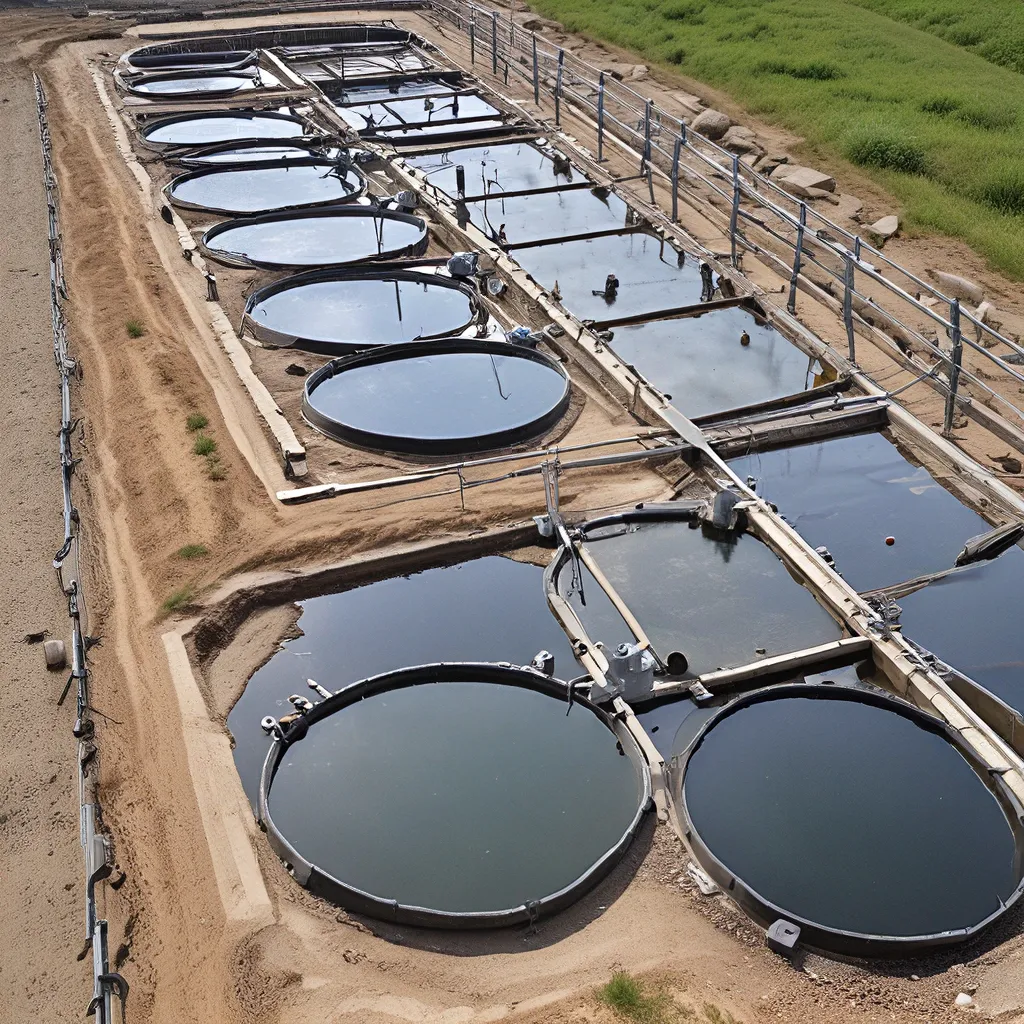
In the ever-evolving landscape of sustainable energy solutions, one field that’s been quietly making waves is the integration of renewable energy into the heart of our wastewater treatment infrastructure. It’s a fascinating intersection of technology, environmental conservation, and the pursuit of a greener future – and I’m excited to dive into it with you today.
Embracing the Power of the Sun
One of the most promising renewable energy sources for wastewater treatment plants is solar energy. This clean, abundant, and increasingly affordable resource has been steadily making inroads in the industry, transforming the way these facilities operate.
Solar energy utilization in wastewater treatment dates back to the early 20th century, when pioneers first explored its potential for water heating. But the true revolution has come in recent decades, as advancements in solar technology have made it a viable and cost-effective solution for a wide range of applications within the wastewater treatment process.
Think about it – these plants are often located in sunny, open spaces, making them prime real estate for solar panel installations. By harnessing the sun’s abundant energy, they can power critical components of the treatment process, from aeration systems to pumps and desalination units. It’s a match made in sustainable heaven!
Reaping the Benefits of Going Solar
The benefits of integrating solar energy into wastewater treatment are manifold. Perhaps the most significant is the reduction in carbon footprint. By eliminating the need for fossil fuels and grid electricity, these plants can drastically reduce their greenhouse gas emissions, contributing to a cleaner, greener future.
But the advantages don’t stop there. Solar energy also offers improved energy efficiency and cost savings by minimizing the reliance on expensive grid power. And let’s not forget about the resilience factor – solar-powered wastewater treatment plants can continue operating even during power outages or grid failures, ensuring uninterrupted service and safeguarding public health.
Researchers at Stanford University have even developed an innovative battery technology that can harness the energy from the mixing of salty ocean water and freshwater, further enhancing the renewable energy capabilities of coastal wastewater treatment facilities. Talk about harnessing the power of nature!
Innovative Applications of Solar Energy
So, how exactly are wastewater treatment plants putting solar energy to work? The possibilities are truly fascinating.
One of the most common applications is solar-powered aeration systems, which enhance the efficiency of biological treatment processes and reduce energy consumption. By using solar panels to power the aeration equipment, these plants can optimize their oxygen supply while cutting back on their energy bills.
But the innovation doesn’t stop there. Solar-powered pumping systems are also gaining traction, replacing conventional pumps and delivering even greater energy savings and reduced maintenance costs.
And the real showstopper? Solar thermal desalination – a cutting-edge technique that utilizes solar heat to evaporate and condense water, effectively managing the disposal of brine, a challenging byproduct of the wastewater treatment process.
It’s a true testament to the ingenuity of the human mind, harnessing the power of the sun to tackle some of the most pressing challenges in the wastewater industry.
Case Studies and Real-World Successes
Of course, the proof is in the pudding. And when it comes to the integration of solar energy in wastewater treatment, the success stories are truly inspiring.
Take Case Study 1, for example, where a solar-powered wastewater treatment plant achieved significant energy savings and reduced carbon emissions. Or Case Study 2, which demonstrated improved treatment efficiency and cost savings through the integration of solar-powered aeration systems.
These real-world examples not only showcase the effectiveness of solar energy in wastewater treatment, but they also provide valuable insights and inspiration for future projects. After all, learning from the successes (and even the challenges) of others is the surest path to driving widespread adoption and a greener, more sustainable future.
Overcoming Hurdles and Driving Progress
Of course, it’s not all sunshine and rainbows. Like any transformative technology, the integration of solar energy in wastewater treatment plants faces its fair share of challenges and barriers.
The initial investment costs associated with installing solar energy systems can be a significant hurdle, especially for cash-strapped municipalities. And then there’s the issue of weather variability – cloudy days or periods of low sunlight intensity can affect the reliability and consistency of solar energy generation, requiring careful planning and design.
But where there’s a will, there’s a way. And the wastewater industry is proving itself to be resilient and adaptable. Technological innovations are driving down costs, making solar energy more accessible and cost-effective. And innovative solutions like those offered by Alpha Wastewater are helping to navigate the regulatory and permitting challenges that can arise from integrating solar energy into these specialized facilities.
Moreover, the potential for integrating solar energy with other renewable sources, such as wind or hydropower, holds the promise of enhanced sustainability and energy independence for wastewater treatment plants. It’s a tantalizing prospect that’s already being explored by forward-thinking industry leaders.
The Future is Bright (and Solar)
As I look to the horizon, I can’t help but feel a sense of excitement and optimism about the future of solar energy in wastewater treatment. The technological advancements, the growing policy support, and the unwavering commitment of industry pioneers all point to a future where renewable energy is not just a nice-to-have, but a fundamental pillar of wastewater management.
Imagine a world where these essential facilities are not just clean and efficient, but entirely self-sufficient, harnessing the power of the sun to drive their operations and reduce their environmental impact. It’s a vision that’s well within our grasp, and one that I believe will shape the future of wastewater treatment for generations to come.
So, what are we waiting for? Let’s embrace the power of the sun and transform the way we manage our wastewater. The future is bright, and it’s powered by renewable energy. Who’s ready to be a part of this revolution?